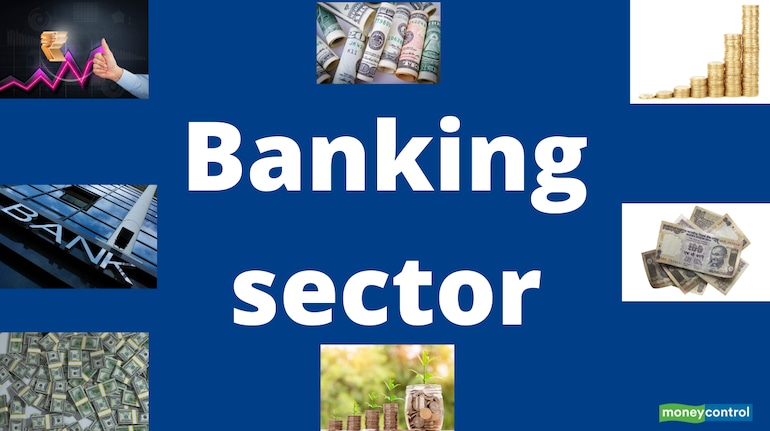Banking Central | 5 key things to watch out in Indian banking sector in 2023
The year 2022 was a rollercoaster ride for India’s banks - RBI’s unprecedented aggression on inflation, arrest of a top banker in a loan scam and continuing collapse of India’s cooperative banks. What’s 2023 hold? Let’s take a look.

For India’s banking industry, 2022 wasn’t an eventful year; 2023 won’t be too different. The year 2022 was a rollercoaster ride for India’s banks -RBI’s unprecedented aggression on inflation, arrest of a top banker in a loan scam and continuing collapse of India’s cooperative banks. What’s 2023 hold? Let’s take a look what all will likely make it to news headlines in 2023 .
RBI’s catch up with inflation will continue
The highlight of the year 2022 was Reserve Bank of India’s (RBI) unprecedented aggression on inflation. The monetary policy committee (MPC) exercised abundant caution in the first half of the year to support growth, and in the process ignored the warning signals reflected in a persistently high inflation data, repeatedly saying inflation is transient. But, that hypothesis failed by the second half of 2022 when inflation spiralled into a monster, forcing the RBI to write a formal response to the government explaining the reasons of failure in keeping inflation in the 2-6 per cent band. In 2023, the RBI hopes to see the result of its aggressive rate actions (225 bps since May) reflecting in the inflation numbers by the first quarter of this year. The general expectation is that the central bank may go for another round of rate hikes soon before ending the rate hike cycle. But the trajectory of inflation is key to watch.
Return of high deposit rates
One unintended consequence of RBI’s inflation fight (read back-to-back rate hikes) was return of relatively higher interest rates in the fixed deposits. FD rates have remained low for too long (averaging around 5%-5.5%) languishing below the inflation rate (that meant negative returns to the investor). But, the year 2022 changed all that. Interest rates on time deposits look much better now with banks offering as much as 7 per cent on 18-24 months deposits and non-banking finance companies (NBFCs) beating the competition with even higher rates. On 31 December, retail NBFC Shriram Finance said it will offer up to 9.36% interest rate for select depositors. This is taking the rivalry to the next level. Tight liquidity and demand for funds to push credit growth could intensify the battle for deposits for banks and non-banks in 2023. That’s good news for savers, no doubt. For average Indian investors who still consider bank FDs as better options vis-à-vis equity/MFs, this will be a good year.
RELATED STORIES

A top banker got arrested
There are very few instances of top bankers getting arrested in India for involvement in unlawful activities. For several years, corporate loan scams have been unearthed leading to actions against erring promoters and middlemen. But bankers, in most cases, have walked scot-free. But former ICICI Bank CEO, Chanda Kochhar’s arrest changed this. This is probably the first time a (former) high-ranking officer of a large bank getting arrested by Indian law enforcement agencies in a corruption case. Kochhar’s arrest, along with that of her husband Deepak and Videocon chief Venugopal Dhoot could send shivers down the spine of other bankers when it comes to large-ticket corporate loan deals. Bankers will be even more cautious while being part of credit committees when deciding on corporate loans. In Kochhar’s case, the bank lent to a company which had invested in her husband’s business through multiple layers of transactions-a clear case of quid-pro-quo deal.
India’s coop bank mess
Year 2022 continued to see the sad state of India’s struggling cooperative banks. The Reserve Bank of India (RBI) cancelled the licences of 12 crisis-ridden cooperative banks in 2022 and imposed penalties around 110 times on wrongdoers. This was in line with the trends seen in previous years. The central bank has been clamping down on errant cooperative banks in the last few years. Cooperative banks, which have played a critical role in extending banking services in the villages, have been confronting a range of issues, including dual regulation, weak finances and interference by local politicians. Each bank closure meant difficulties to thousands of depositors in these entities, even though the deposit insurance over would help a majority of the depositors to get their money back. The RBI clampdown is likely to continue on erring and weak cooperative banks in 2023 unless there is an overhaul in the way these banks are operated and governed.
Bad loan crisis is over?
It looks like in 2022, banks saw the worst of asset quality woes. The gross non-performing asset (GNPA) ratio of scheduled commercial banks (SCBs) fell to a seven-year low of five percent in September 2022, the Reserve Bank of India (RBI) said in its financial stability report (FSR) on December 29. The net non-performing assets (NNPA) dropped to a 10-year low of 1.3 percent in September 2022, the FSR report said. But this improvement needs to be seen in the backdrop of massive loan write offs. Banks wrote off Rs 10,09,511 crore during the last five financial years, according to data submitted by the government in Parliament. Written off loans are off the books of banks but remain within the larger financial system. These are unresolved assets. In other words, banks’ books look much cleaner now but for the financial system, the stress remains somewhere within.
A loan is written off when there is no scope of recovery left and banks want to simply take the bad asset off their balance sheets. The banks need to set aside money in the form of provisions to cover such loans. This affects their profitability. At the same time, public sector banks could recover only Rs 1,03045 crore from written off loans from the last five financial years, Sitharaman said citing RBI data. The aggregate recovery in the last five years amounts to Rs. 4,80,111 crore, the minister said. The future trajectory of bad loans will depend on how the economic recovery is shaping up in 2023.
What else? There are huge gaps in regulation concerning private Cryptocurrencies. On the other hand, the much-hyped Central Bank Digital Currency (CBDC) roll out is likely scheduled this year. State-run banks' privatisation will likely a non-agenda this year. Also, these banks are unlikely to get new capital infusion from Government in this year, meaning the Union Budget 2023 will be largely a non-event for the sector.
Wish a happy new year to all readers of Banking Central!
(Banking Central is a weekly column that keeps a close watch and connects the dots about the sector's most important events for readers.)
- Get link
- X
- Other Apps
- Get link
- X
- Other Apps

Comments
Post a Comment